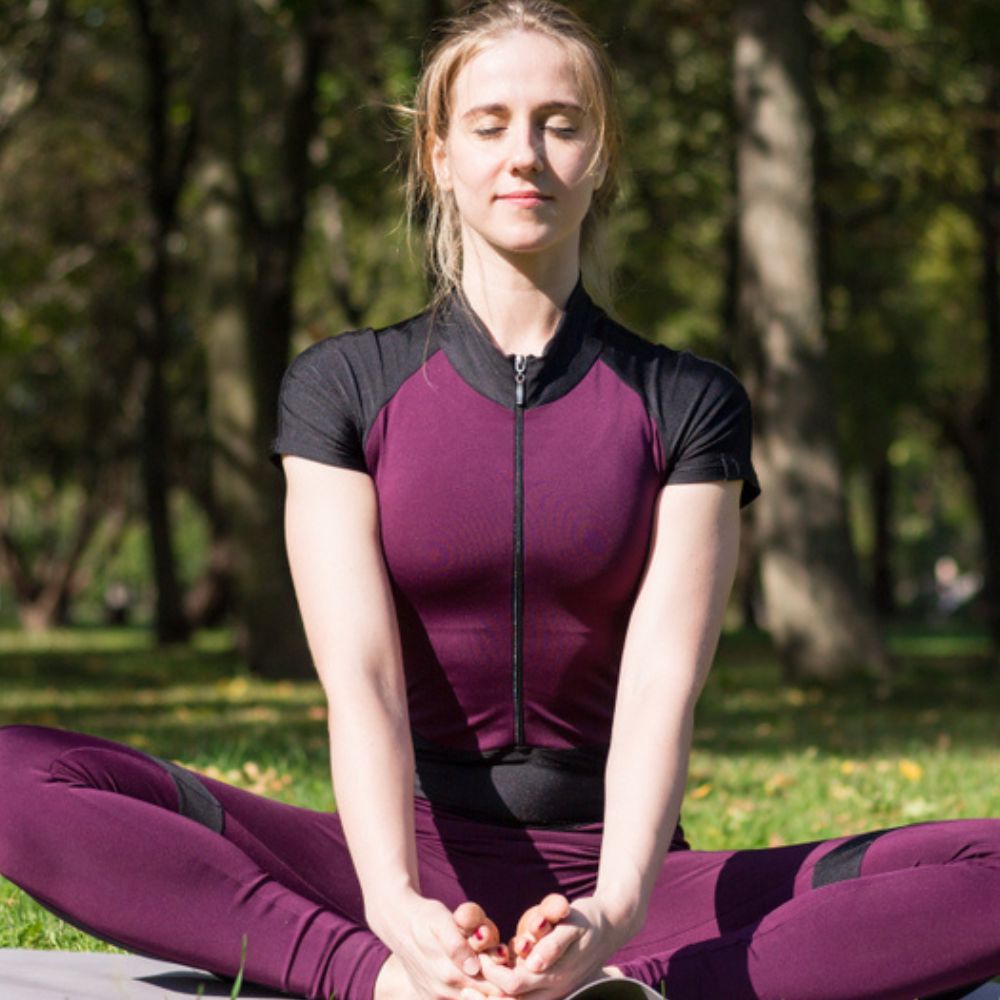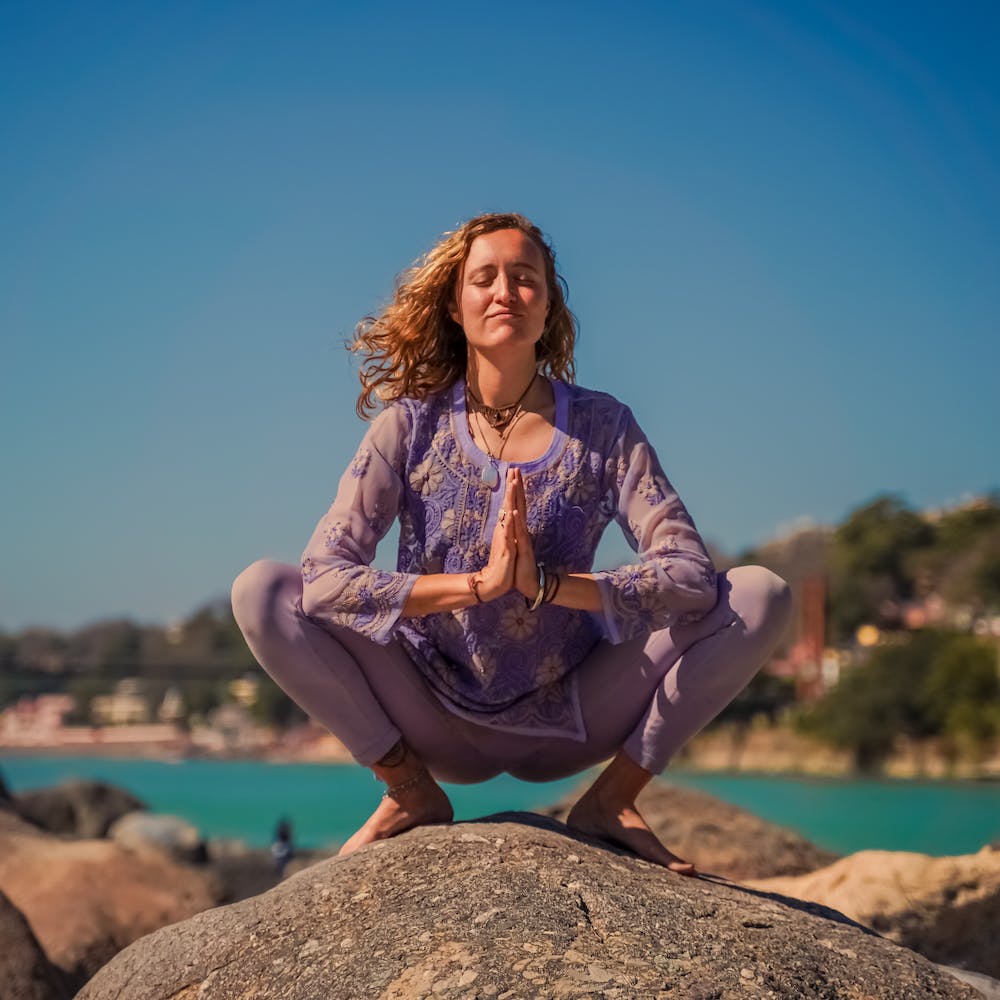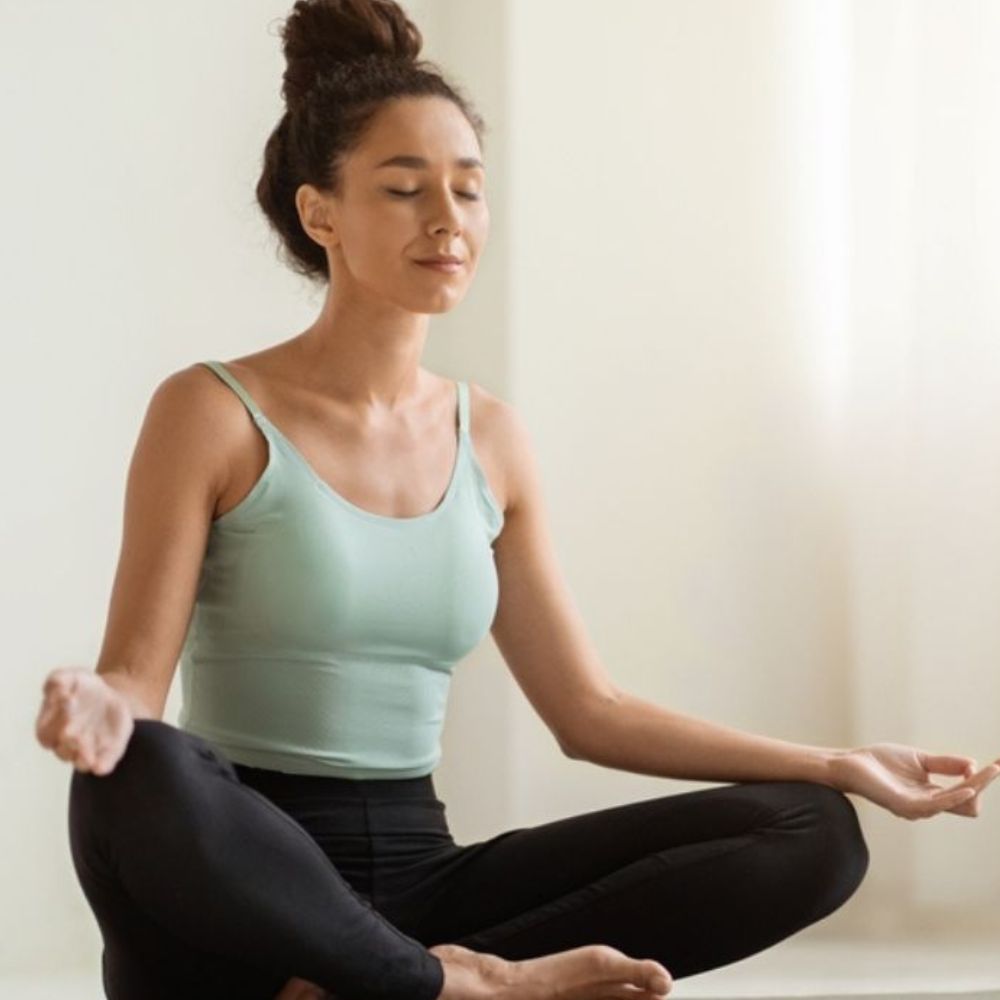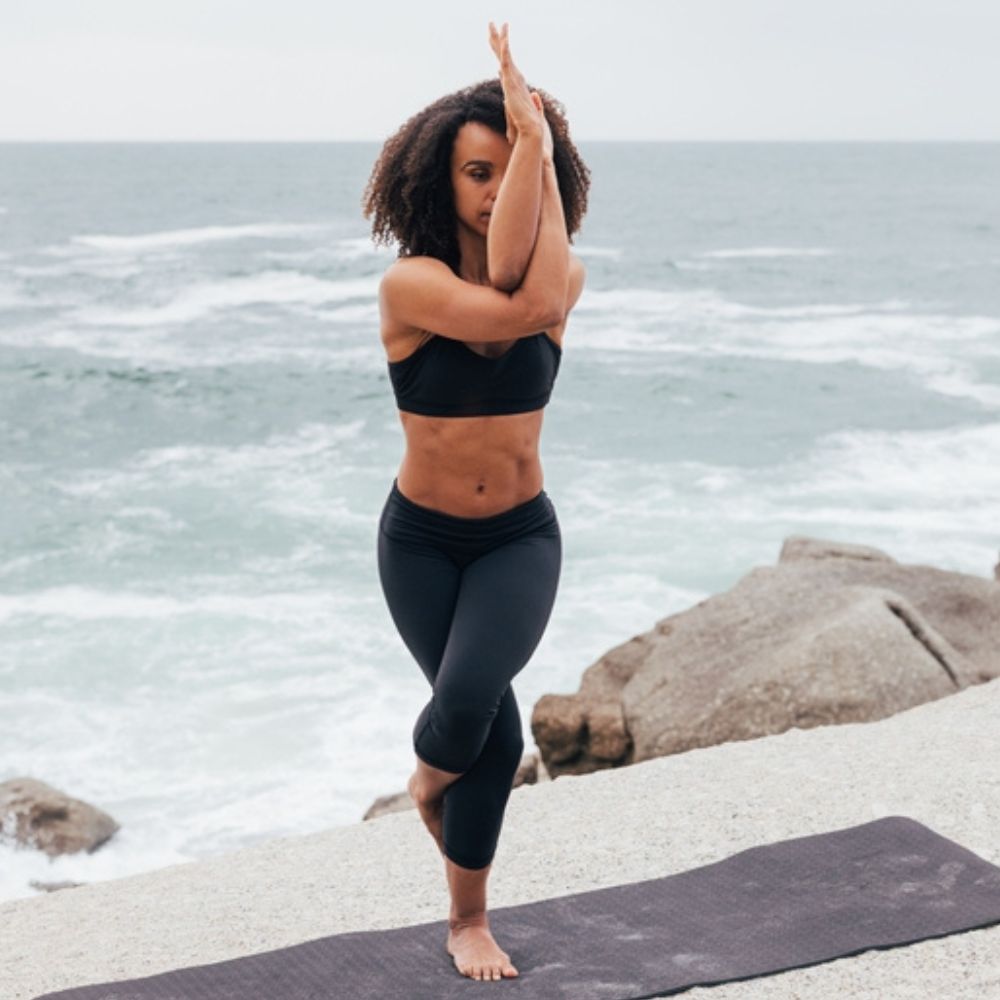Dolphin Pose: The Secret to Balance, Engage, And Stretch Your Body
Master the balance between strength and serenity in your yoga practice with Dolphin Pose. Improve the strength of your core, arms, and shoulder stability today.
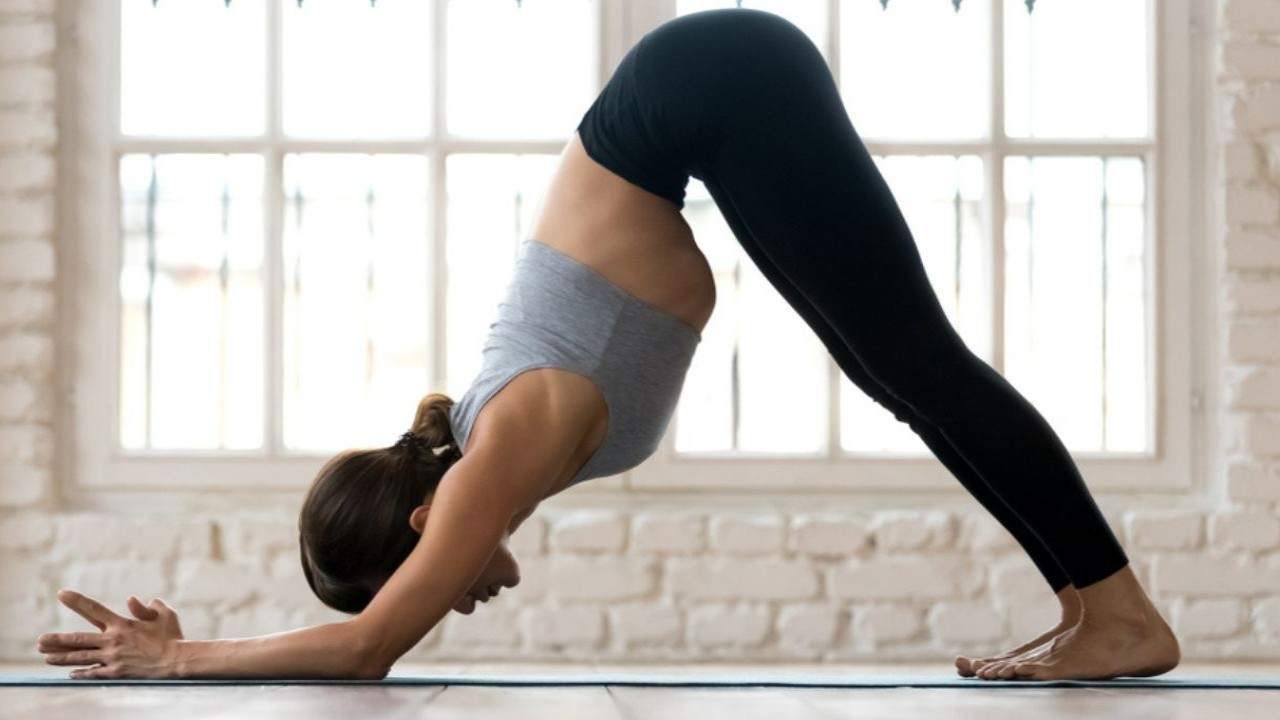
Yoga poses encapsulate the essence of strength and serenity of mind, and one of those is Dolphin Pose, a posture that defies gravity. As one of the best inversion poses, it is more like a foundation that prepares both body and mind for advanced yoga poses. This pose, known as Ardh Pinca Mayūrāsana in Sanskrit, helps practitioners by opening and fortifying the upper body.
Our contributor Bayu Prihandito, a Life Coach, and RYT 200 Yoga Teacher, says, “Ardh Pinca Mayūrāsana (Dolphin Pose) is excellent for strengthening the shoulders, arms, and core muscles. It offers a solid workout for the entire upper body muscles, promoting muscle tone and endurance.”
Once you get used to this multifaceted posture, the peacock's grace infuses your practice, expanding your range of motion and sculpting your core with the elegance of its namesake. Dolphin Pose serves as a trusted companion, acquainting your physique with the novelty of upside-down postures.
According to our contributor Casey Castro, a senior Yoga Teacher and the founder of Sydney Yoga Collective, “Ardha Pincha Mayurasana, also known as dolphin pose strengthens the arms, shoulders and the upper back, while at the same time stretching the hamstrings, calves, and shins.”
Engaging in this Dolphin position yoga is not merely performing a static hold. This pose invites you to explore the layers of physical resilience and mental focus required for inversions without the intimidation of lifting into total arm balances.
“Dolphin pose can increase concentration, as there are many factors at play whilst maintaining alignment in this asana. The elbows must be aligned to shoulder width, with the bulk of the weight going into the hips and legs, concentration is key to ensure that weight does not go too much into the shoulders,” says Casey Castro.
Our contributor Bayu Prihandito says, “Dolphin Pose requires strong focus to maintain proper balance and alignment, which almost naturally redirects your attention inward. This inward focus cultivates presence, concentration, and mental steadiness.”
Regular engagement with Dolphin will gradually help you ace the upside-down asanas and transform the way you move.
How to Do Dolphin Pose?
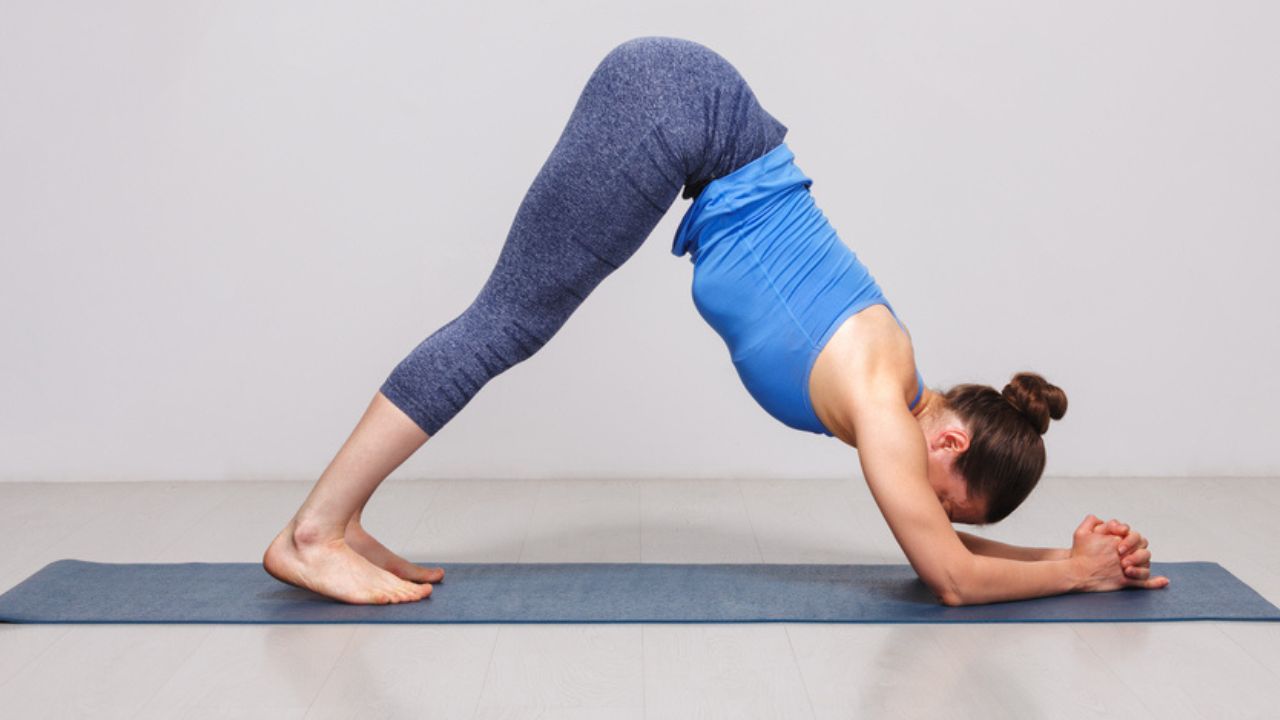
Dolphin pose in yoga is an invigorating yoga posture that builds strength, enhances flexibility, and prepares the body for inversions. This asana offers a moderate challenge, providing a deep stretch to the shoulders, hamstrings, and calves while strengthening the arms, legs, and core.
Step-by-Step Guide to Perform Dolphin Pose
1. Begin on your hands and knees, keeping your wrists aligned under your shoulders and your knees under your hips. This 'all fours' position is the initial setup for moving into the pose.
2. Place your forearms on the floor with elbows placed directly under your shoulders. You have the option to either keep the palms of your hands flat and forearms parallel or interlace your fingers with the bottom pinky tucked in for stability.
3. As you exhale, curl your toes under, engage your lower belly muscles, and gently lift your knees off the floor, transitioning your weight onto your toes and forearms.
4. Push your hips upward, drawing the tailbone toward the ceiling. Extend your legs fully to form an inverted 'V' shape with your body, allowing your heels to descend towards the ground without the need for them to make contact.
5. Activate your thigh muscles to support the extension of your legs. Continue to draw the lower belly in, providing core support as you firmly press your forearms into the floor.
6. Consciously press the shoulder blades onto your back, creating space between the shoulders without letting them creep up to your ears. Ensure your spine remains long and elongated.
7. Keep your head relaxed between your arms, ensuring it doesn't touch the floor, to keep your neck neutral.
8. Maintain this position for 5 to 20 breaths, focusing on the rhythm of your breath and the engagement of your body.
9. To exit, on an exhale, gently lower your knees back to the floor. Transition into Child’s Pose to rest and allow your body to assimilate the benefits of the Dolphin Pose.
While performing this pose, each step should be approached with mindfulness and attention to body alignment to reap the full benefits. Regular practice leads to improved posture, greater core strength, and the grounding yet uplifting effects of a balanced yoga routine
Benefits of Doing Dolphin Pose
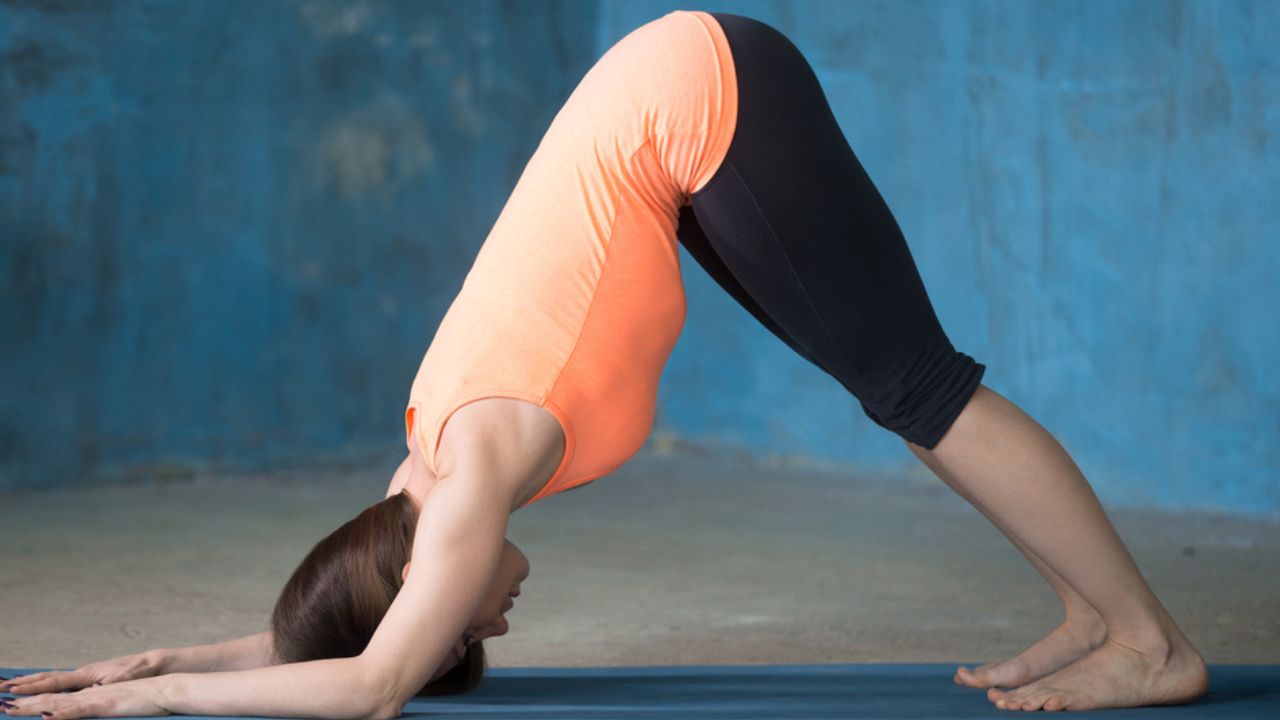
Dolphin Pose, or Ardh Pincha Mayurasana, is a powerful asana that weaves together strength, flexibility, and balance. As a close cousin to the more recognized Downward Facing Dog, this pose has a unique constellation of benefits, enriching both the novice and seasoned yogi's practice. These benefits extend from the physical body to the subtle nuances of the practitioner's mental and emotional landscape.
1. May Strengthen Your Muscles
The Dolphin Pose is a full-body activator, targeting multiple muscle groups simultaneously. It demands engagement from the shoulders, arms, and upper back, which in turn cultivates robust forearms and prepares the body for advanced arm balances and inversions (1).
2. May Increase Mental Focus
Dolphin Pose catalyzes heightened body awareness and mental focus. By engaging the core and maintaining a delicate balance, this pose sharpens concentration and lays the groundwork for the challenging inversions in yoga (2). The active mindfulness required to execute the Dolphin Pose echoes beyond the mat, infusing daily life with an increased sense of presence (2).
3. May Improve Your Posture
In today's digital age, where screens dominate our field of vision, Dolphin Pose emerges as an antidote to the strains of a sedentary lifestyle. By opening the shoulders and aligning the spine, this pose counteracts the slump and hunch, promoting an upright and poised posture that radiates confidence and vitality (3).
4. May Help in De-stressing
Dolphin Pose inverts the traditional body posture, enabling a refreshing rush of blood to the brain (4). This inversion is not just physically rejuvenating but also mentally revitalizing, combating fatigue while aiding in the alleviation of stress and anxiety (4). The pose may also enhance mental health, contributing to improved concentration, a stimulated nervous system, and relief from mild depression and insomnia.
5. May Stimulate Abdominal Muscles
By activating the core, Dolphin Pose encourages the abdominal muscles and stimulates the internal organs. This stimulation supports metabolic functions and digestion and can be a beneficial element in sequences designed for trimming belly fat. The enhanced function of the liver, kidneys, and intestines contributes to an overall healthier system (5).
6. May Help in Therapeutic Healing
As a therapeutic posture, Dolphin Pose reverses the blood flow, refreshing the brain and vital organs with oxygen-rich blood (6). This rejuvenation can have a therapeutic effect on improving sleep quality.
Through the lens of these benefits, Dolphin Pose emerges not merely as an asana but as a holistic practice that touches upon every aspect of well-being.
Variation And Modification of Dolphin Pose
Dolphin Pose offers room for variations and modifications to enhance or decrease its intensity, depending on one's level of comfort and ability.
- Supported Dolphin Pose
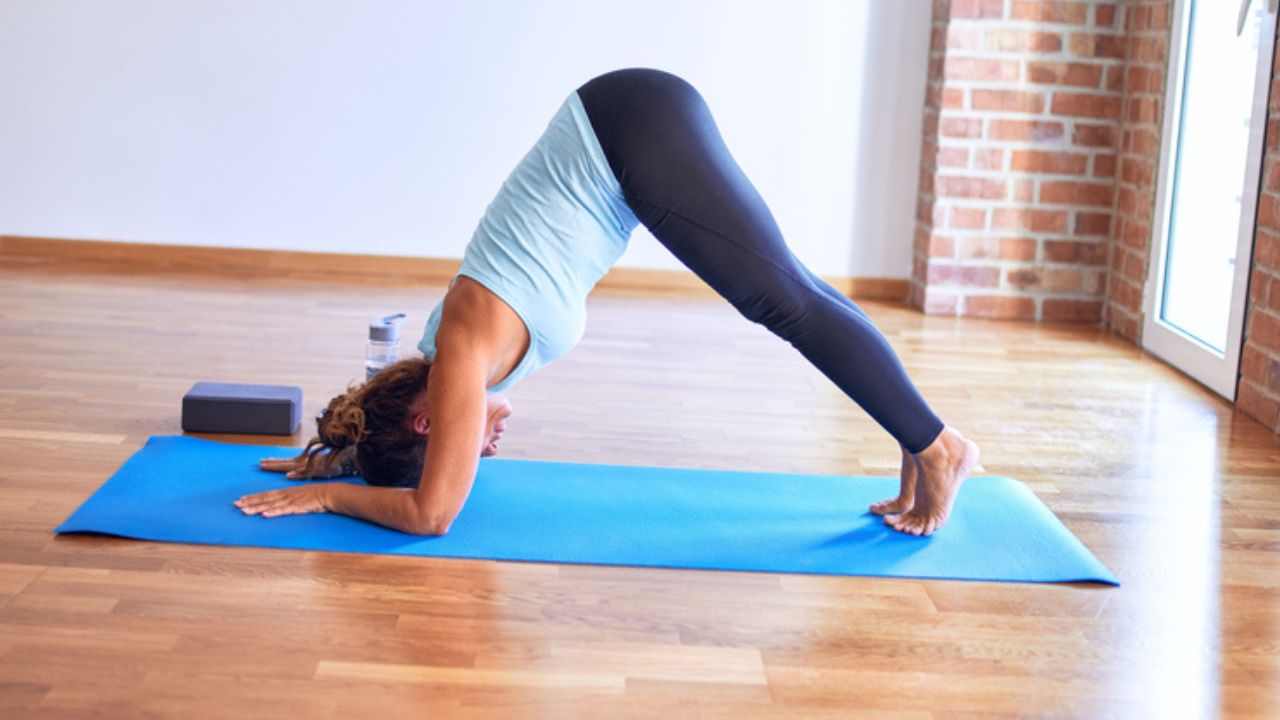
Supported Dolphin Pose variation is excellent for those who find the standard Dolphin Pose challenging on the wrists or shoulders.
1. Begin with your forearms on the floor.
2. Place a folded blanket under your elbows to offer support.
3. You can also use yoga blocks to support your hands.
- Dolphin on the Wall
For those working on inversions, Dolphin on the Wall is an intermediary step that helps build the necessary strength and confidence.
1. Stand facing a wall.
2. Place your forearms on the floor a foot or two away from it.
3. Slowly put your feet back.
4. Lift your hips.
5. Move your head and chest gently towards the wall, keeping the body at an inclined angle.
- Dolphin Plank Pose
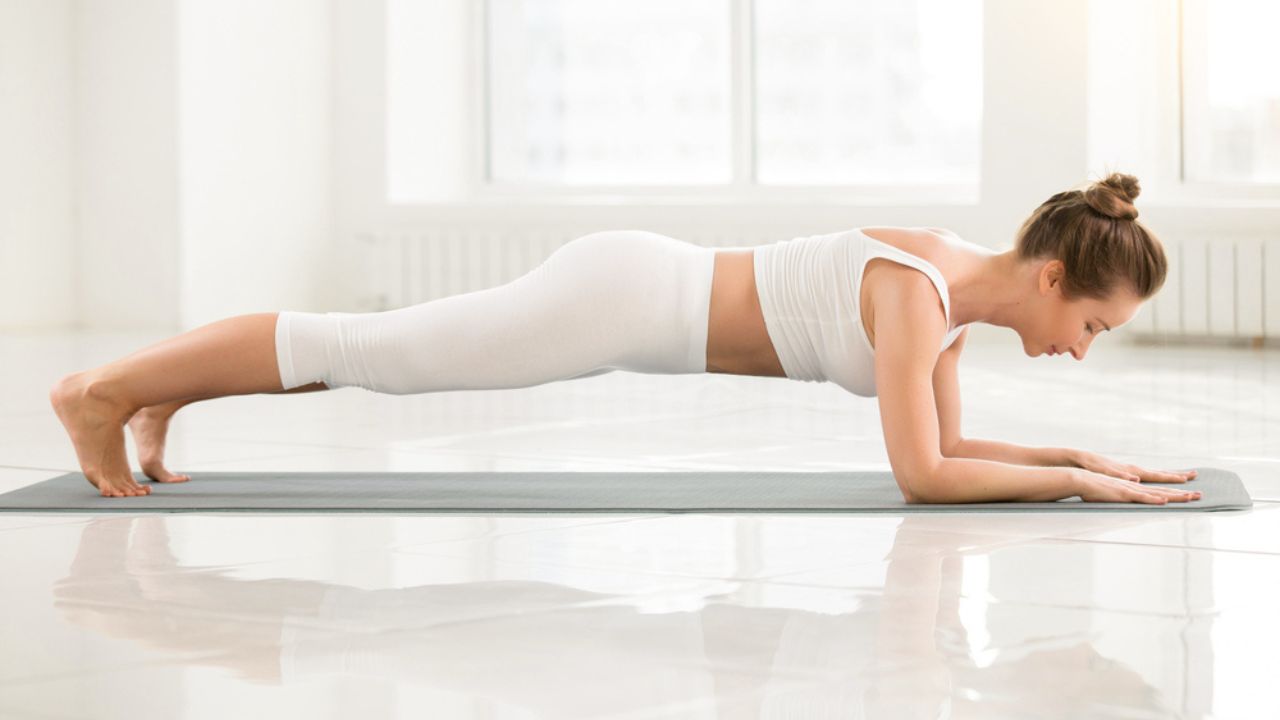
This powerful variation increases core and shoulder strength, setting the foundation for more complex poses.
1. Start in Dolphin Pose.
2. Shift your weight forward gradually.
3. Hold your shoulders above your wrists.
4. Extend your body into a straight line from head to heels, resembling a plank.
- Dolphin with Leg Lifts

Introducing leg lifts to Dolphin Pose adds a balancing challenge and engages the core more deeply.
1. Assume the Dolphin Pose.
2. Steadily lift one leg upwards, keeping your hips square.
3. Hold this lift for a few breaths, then gently switch to the other leg.
Whether you are a beginner seeking comfort in Dolphin Pose or an experienced practitioner looking to deepen your practice, these variations and modifications offer a spectrum of challenges. Each of the variations targets different muscle groups and adds an edge to the pose, allowing for a customized and progressive yoga practice.
Beginners Tips to Do Dolphin Pose
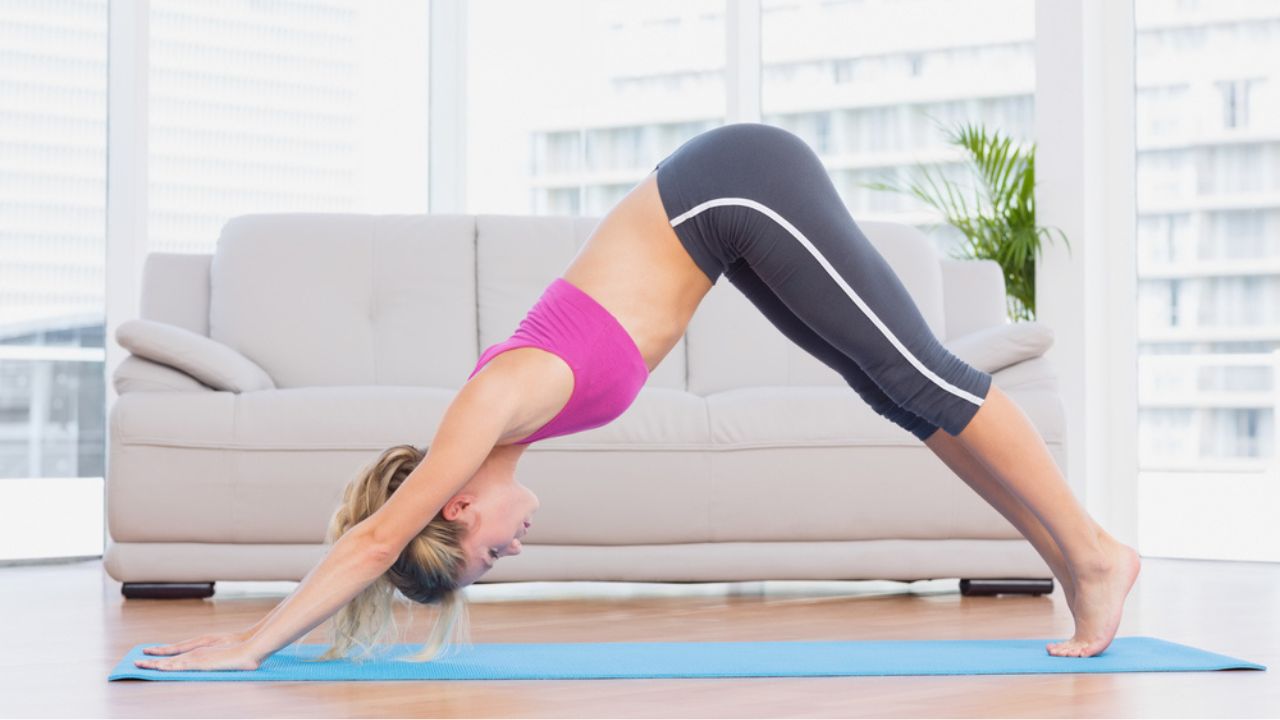
Starting a yoga practice comes with its challenges, and Pincha Pose yoga can be pretty daunting for newcomers. This asana, while beneficial, requires some guidance for beginners to perform it safely and effectively.
- Shoulder Opening for Beginners
For those just starting, tight shoulders might make the Dolphin Pose seem unattainable. A helpful modification involves placing the elbows on a rolled-up mat or blanket to elevate the forearms slightly. This adjustment helps open up the shoulders. Press down through the inner wrists firmly to counterbalance the elevation and maintain stability.
- Maintain a Strong Spine
A very flexible spine can be a double-edged sword in this pose, leading to a tendency to let the rib cage sink, which compromises the back's integrity. To combat this, beginners should consciously draw the lower ribs in, as if bracing the core, to ensure the back remains flat. This action avoids unnecessary pressure on the lower back and maintains the proper alignment of the spine.
- Heel And Foot Placement
Beginners tend to place their heels on the floor, which can distort their posture. It's more beneficial to focus on the length of the spine and the lift of the pelvis rather than the position of the heels. Avoid walking their feet too close to their hands, as doing so can reduce the length of the spine. Keeping the heels lifted and legs straight can provide more stability and integrity to the pose.
When beginning your journey with Dolphin Pose, remember that it's not about how the pose looks but how it feels. Focus on building the pose from the ground up, ensuring proper alignment, and avoiding the temptation to achieve the 'final' posture prematurely.
Safety Tips to Keep in Mind While Performing Dolphin Pose
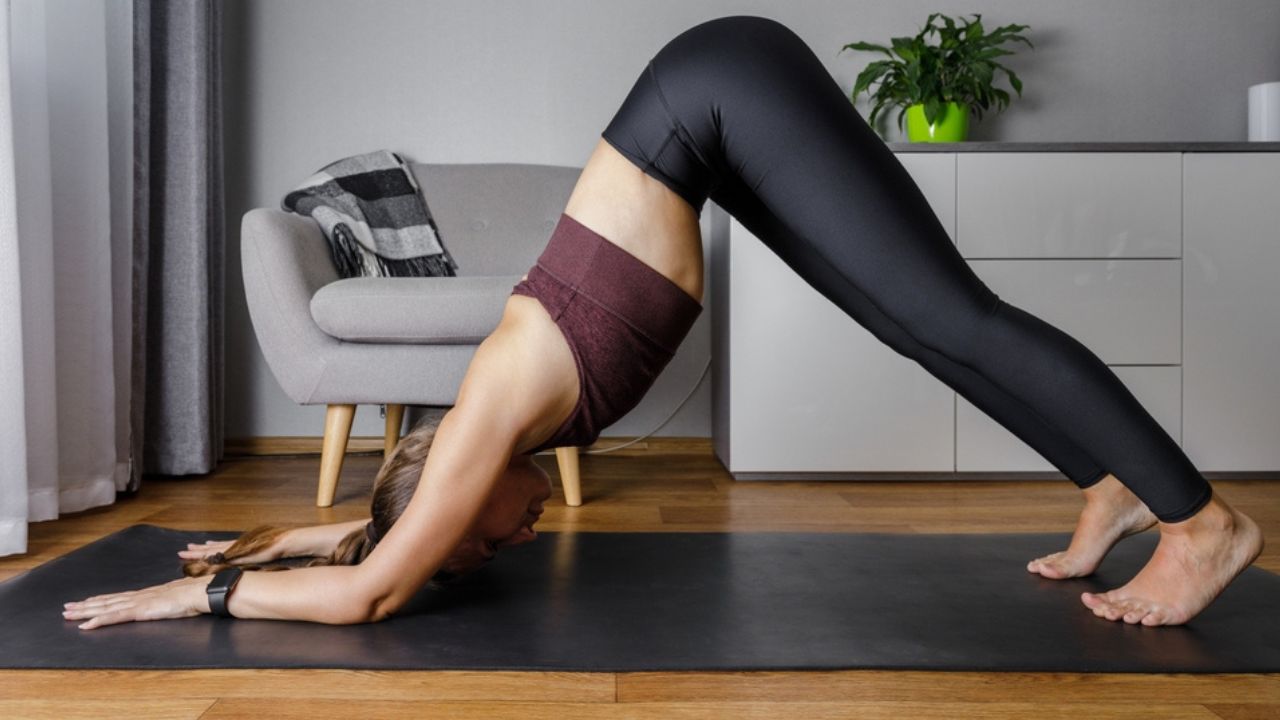
Before beginning any new exercise regimen, including yoga and poses like Dolphin Pose, consulting with a healthcare provider is essential, especially for individuals with pre-existing health conditions.
People with lower back issues, such as sciatica, should approach Dolphin Posture cautiously. The pose requires a significant spinal extension and may exacerbate certain conditions.
Since the Dolphin Pose places weight on the forearms and wrists, those with existing wrist or hand injuries should avoid this pose or modify it to reduce pressure on these areas.
Anyone recovering from surgeries, particularly those affecting the neck, knees, feet, hips, arms, or hands, should steer clear of this pose until fully healed and cleared by a medical professional.
People with high blood pressure should also avoid doing this pose.
Individuals with shoulder, forearm, wrist, or hand instability or weakness should practice Dolphin Pose with caution. Proper alignment and building strength are key to safely performing this asana.
Practicing Dolphin Pose can be a wonderful addition to your yoga routine, but it must be approached with care.
Conclusion
Dolphin pose, with its physical strength, flexibility, and mental fortitude, calls yogis from all walks of life, creating a gateway to enhanced well-being. From the supportive grounding of the forearms in Ardh Pincha Mayūrāsana to the exhilarating ascent into Sirsasana or headstand, Dolphin Pose acts as a loyal companion, nurturing the body's core and setting the spirit aloft. Also, if you’ve had a neck injury or a shoulder injury, it’s best to avoid doing this pose. And if you are a beginner, make sure to do it under the supervision of a yoga instructor to avoid complications or injuries.
Contributor: Bayu Prihandito, Certified Psychology Consultant, Life Coach, and RYT 200 Yoga Teacher, Founder - Lifearchitekture
ALSO READ: 15 Hip Opening Yoga Poses for Better Mobility And Balance





 JOIN OUR WHATSAPP CHANNEL
JOIN OUR WHATSAPP CHANNEL




























































































